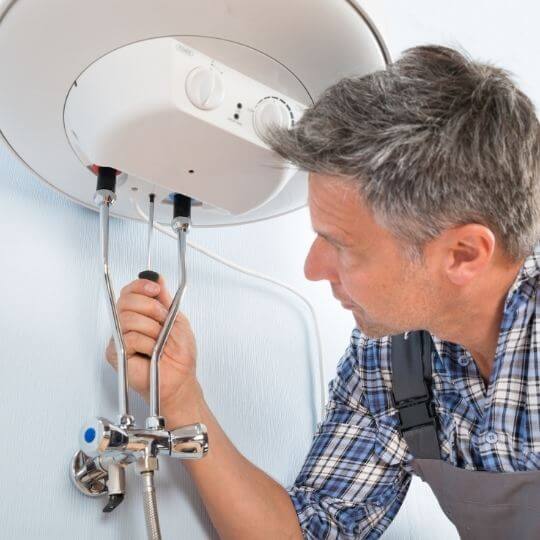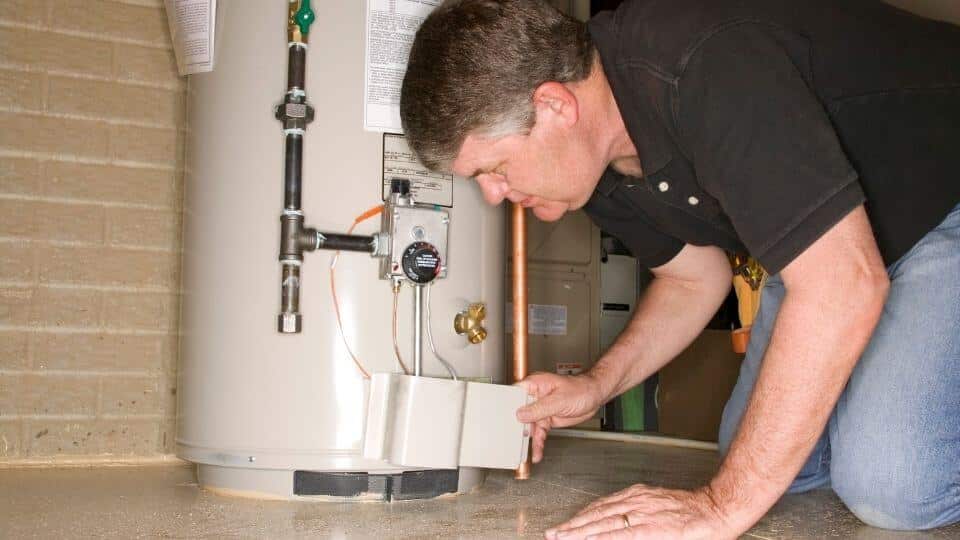Which one is better tall vs short water heater?
Water heaters are intelligently made for comfort and durability. They are medium-sized containers with a heating element on the base. Using the hot air principle, a water heater separates the hot and cold water that enters the system.
As the water reaches the desired temperature, it rises using a heat-out pipe at the top of the tank. From there, the hot water travels throughout your home via the pipes. The water supply for the heater is stored in the tank. The water is heated using either gas or electricity.
The heated water is kept in the storage tank until it is required, at which point it is released through a valve into the pipes and out the open hot water fixture (s). The amount of water the storage tank can contain is specified by the water heater tank’s capacity.
Water heating is often the second most expensive and energy-intensive home expense [1]. It comes second after heating, ventilation, and air conditioning.
It is therefore crucial to understand how to enhance the efficiency of your water heater. This will save you thousands of dollars on your household heating expenses [2].
Knowing the difference between tall and short water heaters is critical. Understanding your water heater’s size can help you determine its external dimensions and, more critically, how many gallons it can hold at one time. Knowing these facts might help you save money. Your water heater’s height and capacity influence how much it costs.
Tall vs Short Water Heater

Tall Water Heaters
Tall water heaters range in height from 50 to 76 inches. They normally hold between 30 and 100 gallons of water, and their cylinder shapes have a diameter that ranges from 18 to around 21 inches.
They are frequently installed in homes with basements or garages since the height of the unit may be accommodated there. Tall water heaters are commonly referred to as “tall boys.” [3]
In addition to the heater height, the installation area must be able to accept the additional height required to connect a supply pipe on top of the tall water heater unit, which can be as much as 40 inches. The connecting pipe, however, can be altered and set up to slant diagonally to match the height of the room’s ceiling.
Short water heaters
The height of short water heaters installed in households varies from 30 to 49 inches. They have large, spherical tanks with 20 to 26-inch diameters. Short water heaters are known as “short boys.”
They are frequently installed within closets, garages, attics, or homes without basements but with crawlspaces.A short water heater usually requires a connecting pipe height of between 29 and 32 inches.
Most short water heaters used for “whole home” water heating have a storage capacity of between 30 and 50 gallons, although some only hold 10 gallons of water.
Similarities and Differences

Similarities
Both short and tall water heaters have a similar working principle, except for the height, diameter, and size of their plumbing pipes. Conventionally, they are tank water heaters rather than tankless. In a nutshell, a modern tank water heater consists of a tank, supply pipes, and a heating element.
Both short and tall water heaters can be powered by electricity, natural gas, propane, or both [4]. They can also be used to store water for solar water heating systems or use a heat pump system in conjunction with a heating and cooling system.
While the plumbing height can be changed to accommodate either a short or tall water heater, installing the pipes vertically will speed up the delivery of hot water to the required destination. Both can be set up either indoors or in auxiliary places. It is ideal to install a water heater close to the plumbing system for the entire house, regardless of whether you select a small or tall water heater.
Each tank water heater has an anode rod to assist shield the tank from corrosion, which is a risk with all water heaters. They also need to constantly remove accumulated sediment, which necessitates flushing the water heater’s storage tank regularly. It’s crucial to choose the proper anode rod based on the water type. [5]
Differences
The main variations between tall and short water heaters are in height, gallon capacity, and the minimum height needed for plumbing connections. Tall water heaters are roughly 16 inches taller, have a 50-gallon capacity increase, and need an additional 10 inches of height for plumbing installation.
In addition, tall water heaters often offer more hot water for bigger homes, whereas short water heaters are appropriate for households with just 2 to 3 occupants.
Choosing Between Tall and Short Water Heaters
The primary considerations when deciding between a short and tall water heater are the installation space available, the capacity requirements, and personal choice.
- Installation Space
Identifying the dimensions of your current water heater is the first step to take before shopping for a short or tall water heater. Examine the installation location and measure the height of the area where the heater and plumbing pipes will be installed using a tape measure.
Then, determine the diameter by measuring the breadth of the area. Check to see if there is any room remaining on the top and sides for simple access, suitable ventilation, and pressure release.
To decide which water heater is ideal for you, compare the measurements you take to the typical range of dimensions for tall vs. short water heaters.
The location you select must be dry, with no evidence of water leakage on the nearby surfaces, as these conditions could cause the water heater to corrode and fail prematurely. Moreover, there should be 30 to 40 inches of space between the heater and the top surface for ventilation and maintenance. [6].
- Capacity
If you need a lot of hot water, tall water heaters are the best option. For instance, a taller water heater would be excellent in a house with more than three occupants, and where the heater will be supplying water to several fixtures at once.
On the other hand, short water heaters function best in situations where there is minimal demand for hot water. Such include a studio apartment where a 30 or 40-gallon tank can accommodate the needs of the house.
- Energy Consumption
Energy consumption is higher for tall water heaters since they have a higher power rating. This is regardless of whether you have an electric, power vent, gas, or propane water heater.
On the other hand, short water heaters often use less energy because of their lower power rating.
Additionally, because there is less water in the storage tank, they heat cold water more quickly and recover than tall ones. This is a crucial consideration if you’re looking to cut costs.
Most Reliable Between Tall and Short Water Tank
The verdict as to which water heater is most reliable depends entirely on the user specifications. If your household requires a lot of hot water, tall water heaters are preferable, whereas space-constrained homes benefit most from short water heaters.
In general, a tall water heater is your best bet if:
- Your hot water runs out regularly
- The hot water flow rate is very low in numerous open fixtures.
- You run your dishwasher or washer with hot water.
- More than three people are living in your house.
- You have enough room to place the appliance and the plumbing pipes while still allowing room on the top and sides for access and ventilation.
- You don’t mind paying extra on your energy bill to store more hot water.
In contrast, a short water heater is your best bet if:
- Your need for hot water isn’t as great
- You have a small home and a tiny installation space.
- Less than three people live in your house.
- You want to reduce your energy costs.
Determine whether your water heater is short or tall
If you currently own a water heater and are unsure of its height, you can find out by looking at its specifications or taking measurements. Before verifying the specifications, examine the heater’s serial number label to see if it has the capacity stated.
Check the product measurements listed in the manual, if you have access to one. Otherwise, use a tape measure to determine the diameter and height of the heater.
Determining Whether Your Water Heater is powered by Gas or Electricity
The procedure for examining your water heater is easy. To avoid burning incidents, make sure the heater is turned off before you begin. Start by activating the access panel. Often, it is found on the heater’s side.
If you observe gas pipes, the heater is powered by gas or propane. Alternatively, if you see heating elements, it is powered by electricity [10].
Related: Gas Electric Heater Working Without Electricity
Up to two exchangeable heating components are used in an electric water heater. They are less expensive, very effective, and have capacities of at least 30 to 100 gallons. Due to the use of a burner, gas water heaters heat with an open flame.
To avoid overheating, a gas water heater needs adequate ventilation space and shouldn’t be put next to anything that could catch fire. Compared to an electric water heater, gas heaters cost more upfront but use less energy over time.
Read Also: Replacing 50 Gallon Water Heater
Conclusion
Hot water in the house may be regarded as a luxury, yet everyone should have access to it. Water heaters are crucial for your general health, whether you’re relaxing in your bathtub or taking a hot shower after a hard day.
Tall water heaters have a maximum height of 76 inches, while short ones reach 49 inches. Whether you live in a warm climate or like to utilize hot water for everyday tasks, a water heater is a requirement in any home. The capacity, energy efficiency, budget, and personal preference will help you determine what to choose as the best.
All things remaining constant, the efficiency rating of a water heater is higher when the tank size is smaller. Large tanks have more surface area than small tanks, which increases heat loss from the tank and somewhat reduces energy efficiency.
No matter how tall or short a heater is, as long as it provides you with the warmth and heat you need in the comfort of your house, it won’t matter.
Contact a licensed plumber if you are unsure of the size of your water heater or if you have concerns about whether a certain water heater will fit in your space.

Michael Davis is a heating & plumbing expert who currently works as independent contractor in SC. He also writes for Plumbertip.
For almost 10 years he worked on various plumbing tasks across South Carolina.


